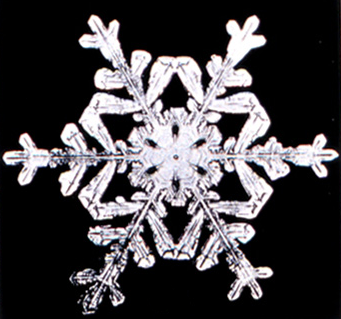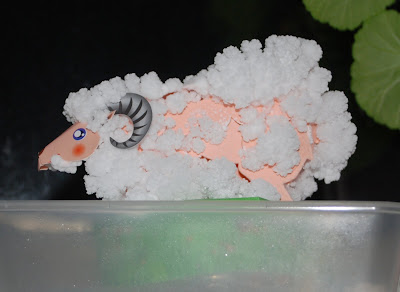Cataclysmic times are apon us! My peace and quiet has been shattered! There I was, thinking it was just mice running around in the pipes (or perhaps my pet rocks - they've been escaping again lately, the clever little things), and suddenly they come crashing through the wall! Worse still, the whole thing was caught on security cameras, and now they're put
 ting it up on YouTube! Can you believe the impudence?
ting it up on YouTube! Can you believe the impudence?I don't mind telling you, it was quite a shock. For them, I mean. I like to think that they were all over-awed by the sheer splendour of the gallery before them... but that's doesn't quite explain the expressions of horror, so perhaps that's not it.
Anyhow, over the past week, they've been taping over the edges, sticking things over the shelves to keep my hands off, and making all sorts of ridiculous pictures of me. Some of them were even videos, which was quite fun - perhaps I should become a film star instead? I bet I could set box office records... but perhaps not the ones they're hoping for.
After all the excitement, the good news is that they're letting you all in to see the place. At least, I think it's good news. I really wasn't ready yet - a few more months of experiments, and perhaps there would have been all sorts of wonders... but still, I do have lots to show you. We'll have to see how the crystal gardens develop, and I'll need help with my cave painting project. Believe it or not, it's free as well, so you can come back as often as you like. I suppose they thought it wouldn't really be fair to charge entry for something like this... although if we get lots of donations, then I might be able to add extra experiments - and you'd like that, wouldn't you? You can make suggestions on the feedback forms as well - I promise I'll read them, and if it's a good idea I might even try it.
You may well see me running in and out of the gallery to check on things, so please feel free to say hello if you do. Actually, if you could remind me about fixing my rock cage, that would be really helpful. And please do keep an eye out for escapees - I know there are loads of them scuttling around the exhibition, and I fear that some of them are getting even further afield.
 Two lucky victims - sorry, recipients - of Dr. Sock's hat-making. At least one of them seems happy...
Two lucky victims - sorry, recipients - of Dr. Sock's hat-making. At least one of them seems happy...Enough for now. I'm off to recover from the experience of meeting the press. Abnormal service will be resumed shortly. Please come visit me at the Leeds City Museum, and let me know of any requests for strange subjects that I can write about (yes, I'm working on the dissolution one, anonymous!)
Toodle-pip.
 So does ice count as a mineral? It seems like a tricky one, at first. According to the International Mineralogical Association's official definition, a mineral is a solid, chemically homogeneous and normally crystalline substance that formed geologically. Well, ice is certainly solid (when it's not melted, of course), and it's certainly a homogeneous crystal... in fact, ice does fit all the criteria.
So does ice count as a mineral? It seems like a tricky one, at first. According to the International Mineralogical Association's official definition, a mineral is a solid, chemically homogeneous and normally crystalline substance that formed geologically. Well, ice is certainly solid (when it's not melted, of course), and it's certainly a homogeneous crystal... in fact, ice does fit all the criteria. Ok, so snowflakes are a bit weird, though. It's said that every snowflake is unique, and it's probably true... but the shape still follows simple rules. Like apatite, beryl and wurtzite (I like that one!), ice has hexagonal crystal symmetry. It tends to grow more quickly at the tips of the hexagon, though. Each spine often branches repeatedly, leading to the typical snowflake shape:
Ok, so snowflakes are a bit weird, though. It's said that every snowflake is unique, and it's probably true... but the shape still follows simple rules. Like apatite, beryl and wurtzite (I like that one!), ice has hexagonal crystal symmetry. It tends to grow more quickly at the tips of the hexagon, though. Each spine often branches repeatedly, leading to the typical snowflake shape:  You can see immediately it's not a random branching pattern, because it's the same on each spine. So what controls it, and why is each one unique? It's all down to the conditions it forms in. When atoms join onto the tip of a crystal, the place they attach to depends on the exact humidity and temperature. Under some conditions, the crystals will form almost perfect hexagons (although I've never seen these myself):
You can see immediately it's not a random branching pattern, because it's the same on each spine. So what controls it, and why is each one unique? It's all down to the conditions it forms in. When atoms join onto the tip of a crystal, the place they attach to depends on the exact humidity and temperature. Under some conditions, the crystals will form almost perfect hexagons (although I've never seen these myself):
 Anyway, back to ice. It would be much more obvious that we should think of it as a mineral if we had, say, pebbles of ice in our rivers. Well, if you go to Titan, the moon of Saturn, that's exactly what you get - pebbles and boulders of water ice, in ethane or methane rivers. Water can even form the solid surface of some planetary bodies, and I must confess I'd really like to visit some of them...
Anyway, back to ice. It would be much more obvious that we should think of it as a mineral if we had, say, pebbles of ice in our rivers. Well, if you go to Titan, the moon of Saturn, that's exactly what you get - pebbles and boulders of water ice, in ethane or methane rivers. Water can even form the solid surface of some planetary bodies, and I must confess I'd really like to visit some of them...
 Moving swiftly on, I promised an update on the green gloop, and that at least is living up to its billing! Indeed, it's turning more gloopy by the minute, and a delightful brown sludge has appeared at the bottom of the cup. There are definite flakes of copper in it, but beyond that I'm baffled. For a few hours, some more mirabilite crystals appeared on the string, but they took a quick look around and decided that they needed to be somewhere else... I really am intrigued by what is going to happen next!
Moving swiftly on, I promised an update on the green gloop, and that at least is living up to its billing! Indeed, it's turning more gloopy by the minute, and a delightful brown sludge has appeared at the bottom of the cup. There are definite flakes of copper in it, but beyond that I'm baffled. For a few hours, some more mirabilite crystals appeared on the string, but they took a quick look around and decided that they needed to be somewhere else... I really am intrigued by what is going to happen next! Soup, anyone?
Soup, anyone?

 Boring old copper sulphate. It is blue, though.
Boring old copper sulphate. It is blue, though.  Salt. Nice, eh?
Salt. Nice, eh?